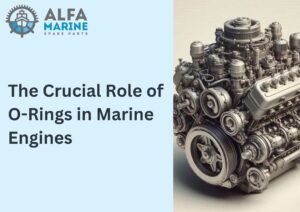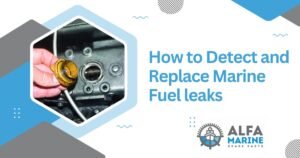The cylinders in marine diesel engines require fresh, high-quality air-fuel mix to regulate the combustion seamlessly. Efficient fuel combustion is necessary to produce energy to power the propelling system. Burning diesel for energy produces exhaust gases in the cylinder during the combustion.
Accumulation of exhaust gases causes overheating in the combustion chamber and potential damage to the engine parts. Scavenging is an advanced technology to remove the exhaust gases from the cylinder. This occurs before the injector supplies a mix of fuel and pressurised air for the next cycle of compression stroke.
Keep scrolling to discover more about scavenging and its importance for the engine.
Understanding Scavenging Mechanism in Engine Cylinders
The scavenging effect occurs when the inlet and exhaust valves simultaneously operate to create valve overlap. The piston pushes the exhaust gases to regulate an exhaust stroke. Exhaust gases escape the cylinder combustion chamber to induce a downward high-speed pulse in the header tube. The simultaneous openings create a low-pressure vacuum at the back of the exhaust pulse to release the exhaust gases and pull a fresh dose of air-fuel mixture for the following compression stroke.
Moreover, the rate of scavenging intensifies with surging rpm and airflow in the system.
Types of Scavenging Operations in Marine Diesel Engines
#1. Cross Scavenging
This conventional scavenging method is complex and not in application in modern vessels. The piston pushes the exhaust gas upwards, allowing a downward passage through the exhaust ports.
#2. Reverse/Loop Scavenging
The exhaust port in the loop scavenging mechanism lies just above the scavenge port. Inlet air ports are positioned at an angle to induce a rotating swirling movement to the incoming air. This charge air passes over the piston crown and escalates to create a loop to purge out exhaust gases through the exhaust port.
#3. Uniflow Scavenging
The simplest yet efficient scavenging method in modern engines. This method entails additional requirements – an exhaust valve fitted on the cylinder head or opposed piston installation.
It requires maximum scavenge efficiency to produce long strokes at low speed. The uniflow mechanism boasts a low-pressure air inlet at the bottom of the cylinder. The piston pushes the gases out through the exhaust valve at the top of the cylinder.
Uniflow scavenging offers maximum efficiency across all scavenge ratios. It creates an advantage over pressure charging while minimising the chances of short-circuit. The cylinder head needs regular maintenance to ensure accurate functionality across all complicated installations.
Impact of Scavenging on Engine Performance and Lifecycle
The efficiency of scavenging performance impacts the fuel economy, performance, and overall engine health. When the piston pushes the air effortlessly through the exhaust valve, it consumes minimal energy. The reverse happens if it encounters blockage or backpressure. Therefore, efficient scavenging has multiple benefits:
- First, high-end scavenging performance boosts the engine’s breathing capacity (volumetric efficiency). It enhances the cylinder filling to improve the horsepower and torque.
- Second, eliminating the exhaust gases faster from the cylinder is vital for cooling the combustion chamber, piston, and valves.
- Third, smooth exhaust gas discharge from the cylinder ensures quiet engine operation without unwanted vibrations. This is a desirable aspect of customer satisfaction in pleasure crafts.
- Fourth, scavenging is a cleaning regimen for removing pollutants, particulates, and soot from the exhaust.
How to Optimise Scavenging for Your Vessel Engine Room
Diesel engines dominate the marine industry for their capability for up to 50% higher thermal efficiency than engines operating on other fuel types. Despite the efficiency, marine diesel engines are responsible for air pollution. Fortunately, the state-of-the-art engines paired with turbocharging systems regulate scavenging and utilise exhaust gases to power the propulsion system.
Nevertheless, the configuration of the engine parts plays a vital role in scavenging. Marine professionals match the exhaust gas release frequency with the inlet system and cylinder head opening. Depending on the rpm range, the specifications must match the lobe separation to camshaft duration and valve timing.
Are you looking for genuine replacement parts for marine diesel engines?
Alfa Marine Spare Parts is the leading supplier of OEM marine spare parts. We ship engines and spare parts globally. Reach out with the required part number if you have a question for a pre-sales query.







